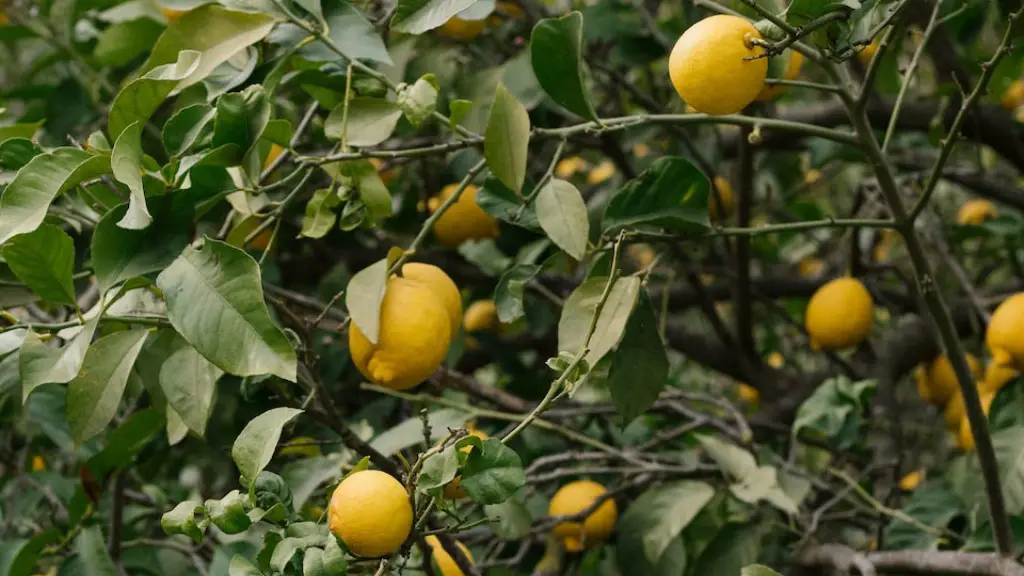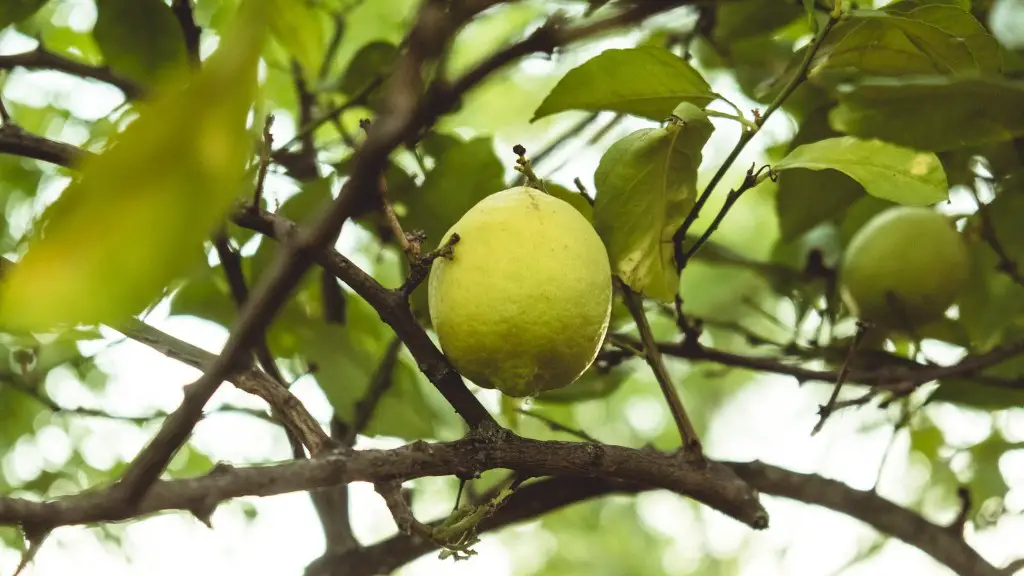Can you put a lemon tree in a pot? Certainly, you can. It is possible to cultivate a lemon tree in a container or pot. Growing a lemon tree in pot has its own distinct advantages that make it an excellent choice for gardeners with limited space. It requires warm weather, regular irrigation, and sufficient soil drainage for success. Understanding the basics of how to properly care for a lemon tree in a pot will ensure a bountiful crop of lemons.
Location
The best place for a lemon tree in a pot is an area of your garden or patio where it will get plenty of light. Keeping the lemon tree in full sun for 8 to 10 hours every day is key for optimal growth. If you keep your pot near a wall, make sure that it is facing south so that it can get the most amount of sunlight. Also, make sure that the temperature in the area never dips below 40oF; lemon trees need warmth to stay alive and thrive.
Soil and Planting
Lemon trees need soil with excellent drainage. When planting, mix in organic matter to sandy loam soils and keep your drainage holes at the bottom of the pot. Additionally, add fertilizer every 2 – 3 weeks (especially when it fruits) following the directions provided with the fertilizer bag. When planting, make sure to leave the union of the tree at the same level as it was in the nursery pot. Prune the branches of the lemon tree to avoid overcrowding of lemons but take into account that the stress might trigger pests and diseases.
Watering
Lemon trees require a lot of water. During the hot season, make sure to give the lemon tree about one inch of water every week. If temperatures and sunlight intensity increase, add more water as necessary. When watering, make sure not to wet the foliage as it makes them more prone to disease. You can use a soaker hose to deep-water your lemon tree. Also, if you see the leaves turning yellow, or the foliage wilts, it’s an indication that the tree needs more water.
Fertilizing
Fertilize the tree 3 times a year – early spring, mid-summer, and late-summer. Use a slow-release fertilizer that is specific to citrus trees and one that contains nitrogen, phosphorus, and potassium. Follow the instructions provided with the fertilizer as over- or under-fertilizing can impair the lemon tree’s growth. For best results, mix the fertilizer into the soil before planting and again when the tree reaches the age of 6 months.
Harvesting
When the fruits turn yellow, you can start harvesting them. Depending on what type of lemon you have planted, these may be ready for harvest in spring or summer. Keep in mind that the longer the fruits stay on the lemon tree, the more intensely they acquire their flavor. You can tell if a lemon is ripe by the color or the shape – it should be yellow or have an oval shape.
Pruning
Pruning is essential for a lemon tree cultivated in a pot. Pruning lets more light and air pass through the branches and also helps maintain a healthy shape and size for the tree. Prune the tree after the harvest, taking into account the overall shape and size of the lemon tree. Consider removing the majority of the citrus fruits, in order to reduce the amount of weight and shock the tree receives.
Pest Control and Disease Prevention
Common pests of lemon trees are aphids and whiteflies. Retain an appropriate level of humidity and take care of the soil nutrition to keep these pests away. Also, maintain some distance between the tree and other citrus trees to prevent the spread of diseases. The main disease to watch out for with lemon trees grown in a pot is gummosis, a condition that affects the roots and causes the bark of the trees to become covered with gummy, yellowish-brown spots. To keep your tree healthy, prune regularly and provide proper nutrients.
Preventing Sunburn
When caring for a lemon tree in a pot, you need to make sure it’s well shaded. Direct sunlight for more than 6 hours a day can cause the leaves to burn and wilt. If the sunlight is too intense, you can use a shade cloth to protect your tree from the sun. Additionally, make sure the pot you choose is light coloured to avoid overheating it. Also, make sure to water the tree regularly.
Container Size
When you first plant your lemon tree, it’s good to start in a container about 1 cubic foot in size. As the tree grows, you should repot it in a larger pot every spring, as it will require more room to accommodate its growing root system. You can choose a pot that is no larger than 5 cubic feet, as potting soil tends to lose its nutrients if the tree roots stay in the same environment for too long.
Repotting
It’s a good idea to repot your lemon tree every year. A pot with a good size drain hole is a must to protect the rootball from becoming too waterlogged and standing in water. If you have a large pot, mix in some perlite or vermiculite to the potting soil to make it more porous. You can use a sharp knife to cut away roots that are too dense, and add more potting soil if needed. Gently firm down the new soil, water the tree, and you’re done.
Harvesting Techniques
When harvesting citrus fruits, never pull or twist the fruit off the tree, or you may damage the branch. The best way to harvest is to cut the fruit off the branch with pruning shears. Make sure to leave some of the stem attached to the fruit, as this will help the fruit retain its flavor. Store your fruit in the refrigerator once harvested for best results.
Fruit Preservation
If you want to preserve your lemon fruits for longer, prepare a solution of 1 part bleach and 10 parts cold water. Dip the entire lemon fruits in this solution for two minutes. Rinse off the lemon fruits with running water and dry them with a paper towel. Store the fruits in an airtight container in the refrigerator to preserve them for up to one month.


